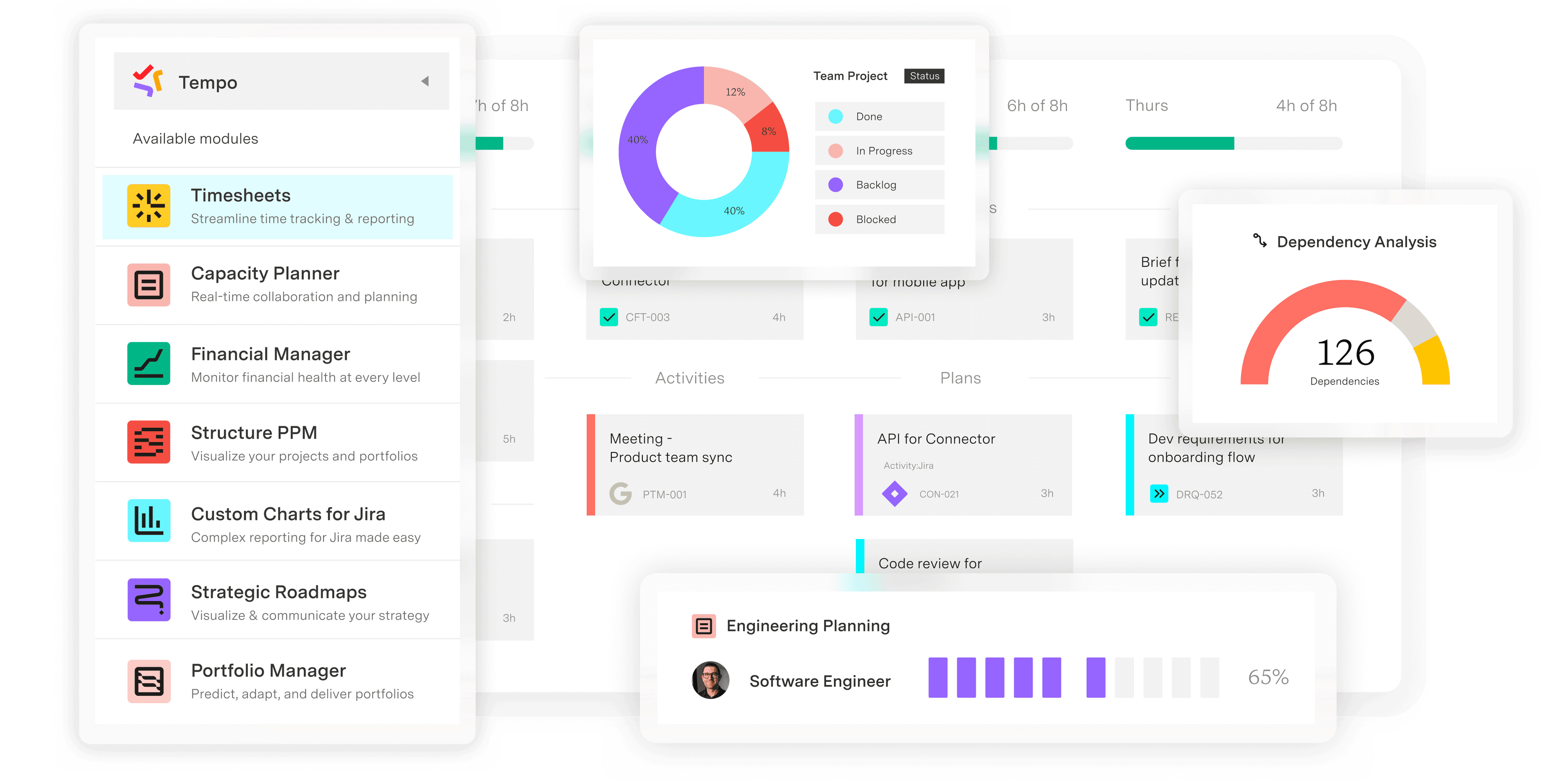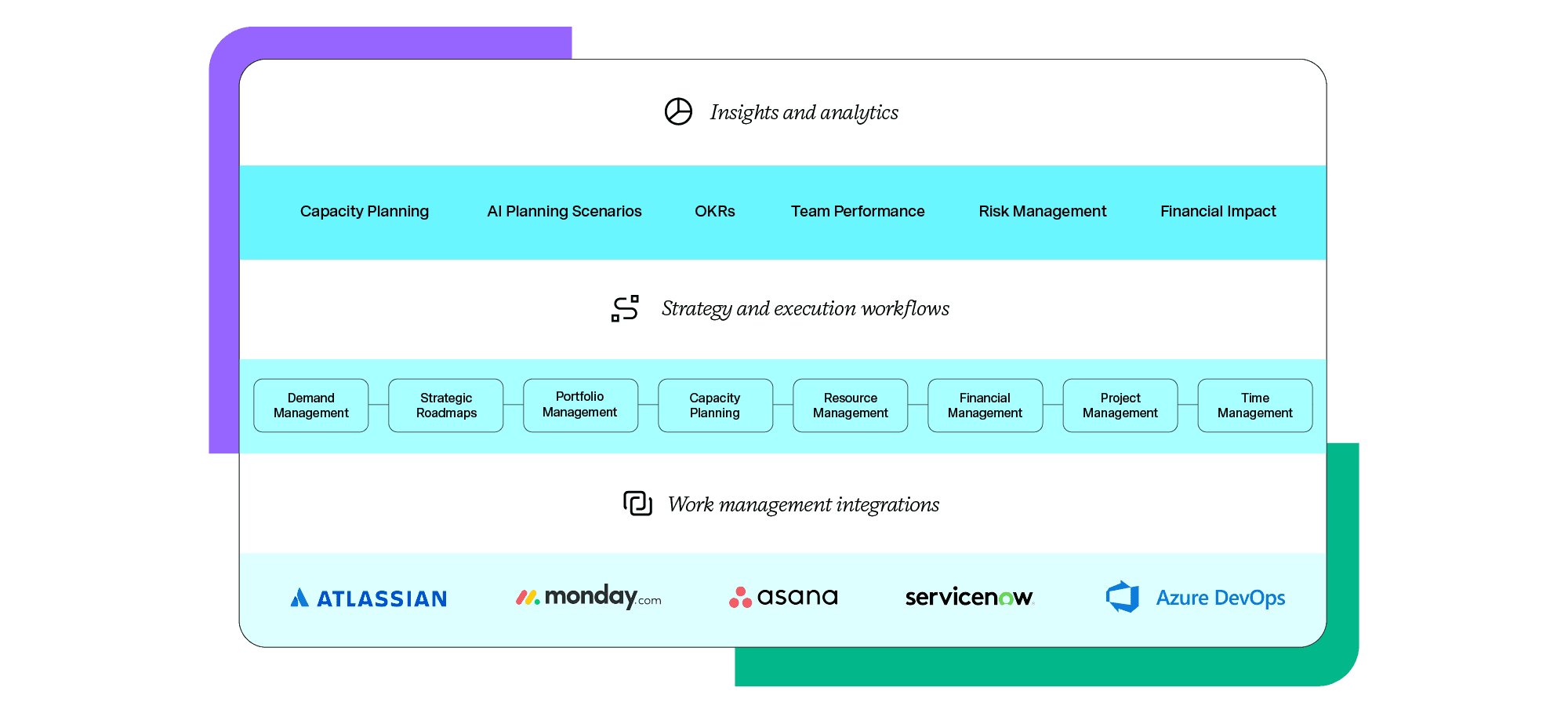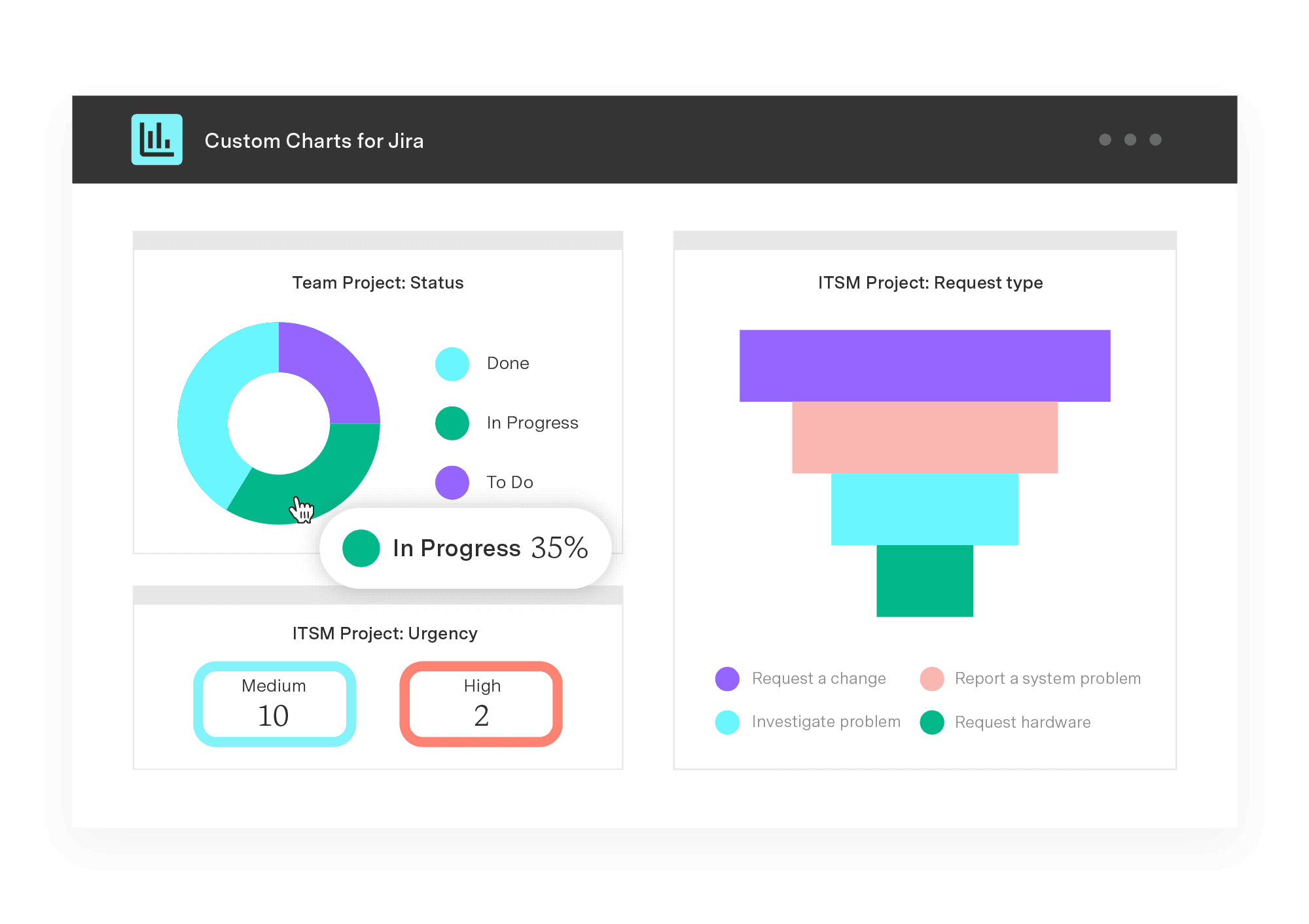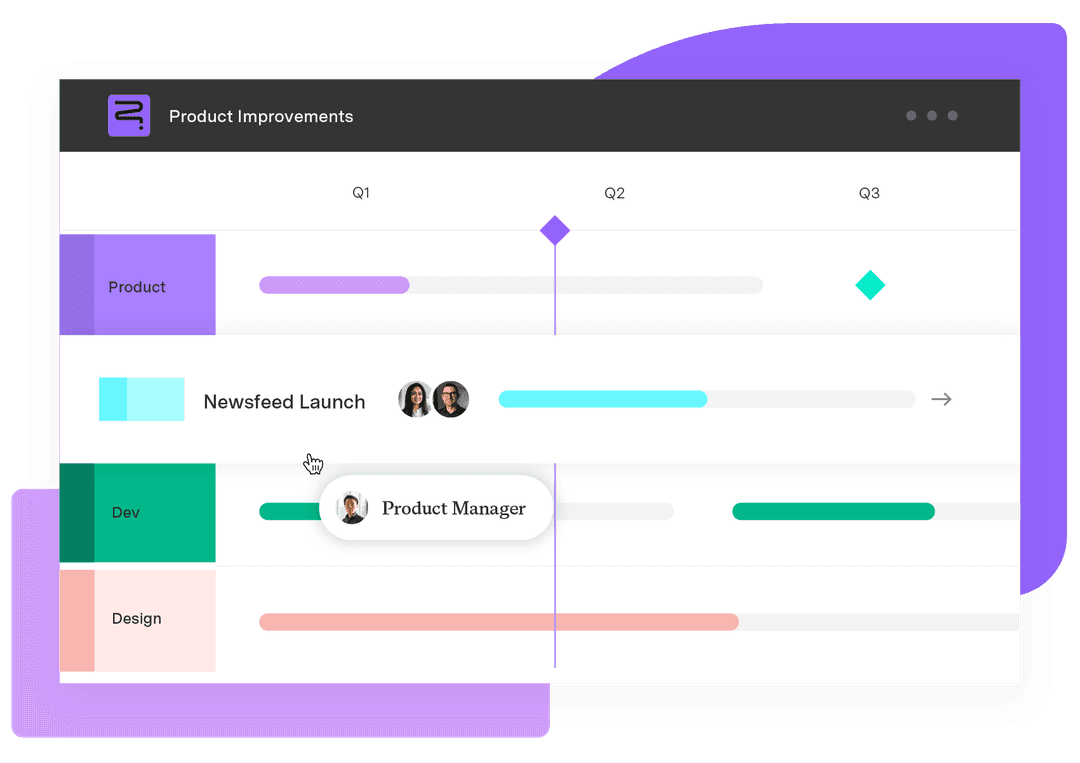What is strategic portfolio management?
Tempo Team
Running a business or managing multiple projects comes with a lot of noise. You’ve got different teams doing different things, deadlines flying at you from every direction, and someone always asking, “Is this actually helping us hit our goals?”
If you’ve ever felt that chaos, you’re not alone. However, from this melee has come a new method to solve it: Strategic Portfolio Management, or SPM for short.
The basic idea behind SPM is simple: Find the best ways to make sure you're spending your resources (money, people, time) on the things that will move the needle for your organization and use the best tech possible to make it all happen.
In this blog, we’ll break down:
What SPM is all about (in plain English)
Why it’s worth caring about (with some eye-opening data)
Why you might want to check out Tempo’s SPM platform
What Strategic Portfolio Management (SPM) is all about
At its heart, Strategic Portfolio Management is about one thing: Making sure the stuff you’re doing lines up with the stuff you should be doing.
Most companies have no shortage of ideas, projects, or problems to solve. However, SPM is understanding that everything comes down to your resources, your approach, and the state of the working world around you.
SPM is all about understanding that the tools you use, how you handle your resources, and your people are all part of an integrated and interdependent system. What we need to do is work out what processes, tools, and ideas are worth it and which ones are just noise that’ll add to the chaos.
Once you start finding ways to move your entire team towards your goals by getting maximum visibility on all your resources, the most useful tools, and an understanding of the environment – you are doing Strategic Portfolio Management.
Think of it as getting a GPS for your organization. Not just because you can get to where you want more effectively, but because it's much better than just memorizing routes or getting a map and someone to read it for you.
Processes improved, the car got better, and then you could buy a GPS. Now, your car can come with one built-in that talks to you, and the whole system works better for everyone thanks to understanding people’s needs and the tech around them.
Put in the simplest terms: The right people, the right goals, working in the right way, with the right tools to support them.

Three reasons you should care about SPM (even if you're not a strategy nerd)
Why should anyone care about this SPM thing? All our fancy metaphors aside – people are actually investing and going in for processes and tools that fall under the idea of SPM.
In fact, a Forrester Consulting study commissioned by Tempo Software found 72% of organizations plan to increase investment in portfolio management solutions in the next 24 months.
So why now? While we aren’t business historians, the development of SPM has likely come from new processes and tools that were developed post-pandemic as advances were made in AI and automation.
Automation and AI are transforming planning by providing predictive insights, streamlining resource allocation, and enabling scenario planning. There are new tools to identify risks and grasp your resource limits long before they start to impact your day-to-day execution.
1. SPM keeps everyone focused on what matters
Without SPM, teams often work on projects that seem important but aren’t aligned with company goals. That means wasted time, missed opportunities, and the classic “why are we doing this again?” meetings.
The tools and processes that make SPM mean more visibility not just for managers, but the folks on the ground who execute on every task. Managers should be able to see who is over-capacity, workers should be able to see the scope of their work and where it fits in, and everyone should know what is coming next (and why).
That means less guesswork and more clarity.
2. You stop spreading yourself thin
When you have a clear portfolio view and a team-wide understanding of goals and priorities, you can stop trying to do everything and start focusing on the right things.
Not only will this prevent a degree of burnout in your team, but the visibility that comes with SPM can give unlock the greatest secret power for your team: The ability to say no to the nice-to-have projects.
That means more time to focus their time and energy on the game-changing projects, and fewer awkward meetings and confusion about what needs to be done.
3. More agility and faster decisions
One of the biggest wins? Agility. With a good SPM system, you’re not locked into a 12-month plan that goes stale after the first market shift. You can adjust course quickly, based on real-time data from your workflows and the changing capacity and priorities of your people.
With that integrated view of all your data and resources also comes the ability to see your past issues, identify bottlenecks that could turn up in the future, and get data-driven insights into how you can improve your business going into the future.
Is this going to be too complicated?
Honestly? It doesn’t have to be.
Sure, there are tools out there with bells and whistles galore. But SPM is as much about mindset and process as it about software support.
Start simple:
Make your goals crystal clear.
List every project currently in play.
Ask: “Is this helping us reach those goals?”
Be ruthless about cutting or pausing what doesn’t.
Then, as you grow, there are tools (like Tempo Software or others) that can help you take SPM to the next level – connecting strategy, resourcing, and performance in real time to make every step of the above more intuitive and accessible for everyone.
The reality of how this helps your team
The main goal with SPM is to bring clarity and control to the chaos of day-to-day execution. Let’s go through some practical situations where SPM should shine:
Helps teams focus on what matters most
With tools to display capacity and a team mentality focused on clear goals and overarching campaigns, people should always know what tasks they should work on and what needs to be turned down.
That means SPM should bring you to a point where everyone, from your most overworked “yes” employee to the most cynical, knows what work they can reject and what work they have to accept.
For another example, a product team with a nasty backlog of feature requests can end up chasing up messages or tickets to work out what to do next. If they know the “big picture” goals and have the tools to see project deadlines, deliverables and capacity – they should already know.
They can look through their documentation, see what aligns to those “big picture” goals – and then work accordingly. Then, no-one should be able to be mad about the results as it was all agreed upon in advance.
Drives better decisions with connected data
SPM connects delivery, financial, and performance data, so decisions aren’t made in a vacuum. Leaders and teams alike can course-correct early, allocate resources more effectively, and track whether work is delivering the intended results.
To take an example, consider a public sector agency where project spending was consistently over budget, and no one knew why.
You can keep doing as your doing and make small tweaks to see if things change – or you can get tools to bring your delivery and financial data together. Then, our agency can discover that their delays were coming from a shared vendor dependency. Fixing that one issue unlocked significant cost savings across the portfolio.
Actually doing SPM
Okay, so if you’ve started to make sense of SPM a bit more, you might be thinking: “How do you actually do any of this without drowning in botched new processes?
That’s where Tempo comes in. We’ve built a platform specifically to make SPM more accessible, integrated, and dare we say…easy?
Collaboration is key for SPM to be a success. Work being done by teams needs to be connected to financial data and resource management, and your timesheets and billable hours tracked alongside your project status.
Measuring success at the portfolio level is crucial for long-term SPM effectiveness. Organizations should track metrics such as portfolio value realization, strategic alignment, and investment performance instead of just project delivery milestones.
By fostering a culture that embraces technology, leverages data-driven insights, and prioritizes strategic collaboration, businesses can fully realize the potential of SPM and drive sustainable, competitive advantage.
So where does Tempo come in?
1. Workflows built for portfolio experts
From demand intake and financial tracking to planning and strategic roadmaps, Tempo covers it all. Our tools are designed to drop right into your workflows with minimal disruption to the way you are currently working.

The bonus? It’s all modular, so you don’t need to rip and replace everything overnight. Tempo’s tools are modular, so you can pick what you need, whether it’s roadmapping, timesheets, or capacity planning – you can select what works with your existing toolkit and build from there.
All serve a specific purpose in your workflows, all play well with others, and can combine to give you the edge with every aspect of work, from things like team-level project management and reporting all the way to enterprise-wide strategic portfolios and financial planning.
2. It plays nice with the tools you already use
Already using Jira, Azure DevOps, or other tools to run your projects? Our solutions can sync up with the tools you are already using and help them go that little bit further towards full “strategic portfolio management.”
That means you don’t have to rework your whole tech stack – Tempo just connects the dots and adds a strategic layer on top.
3. AI-enhanced planning for teams in Jira
If you caught the announcements from Team ‘25, you’ll know that Atlassian announced that all of the AI-enhanced work tools, called Rovo Agents, will be free of charge.
We’ve got multiple across our Jira-native tools – like Structure Formula Assistant to make instant advance formulas and calculations from your instance and Timesheets Worklog Assistant so you can log time instantly without all the clicking around.
Sprint Performance Assistant overview
If you’ve ever wished for a smart assistant to help with project prioritization, capacity planning, or just cleaning up your backlog, we’ve got cutting-edge advancements to help your working day go smoother.
4. One place for all your metrics
Tempo offers you reporting and dashboards that actually make sense for your team with no more jumping between products to gain insights. That means picking and choosing the right tool for you and no monolithic solution block with features you just don’t need.
Do you just want to see your resources are tied up and what people are working on what project? That’s Capacity Planner.
Want to get enterprise-level charts and visualizations straight from Jira to showcase what has been done each quarter with as much granularity as you want? Custom Charts for Jira.

There are even tools for creating roadmaps in minutes from your workflows, or creating visualizations of all the ongoing work across your entire portfolio. Whatever you need – you can drop it into your workflows where you see fit.
No more stitching together reports from five different tools. Of course, the hook for us? While Tempo tools integrate with other software, they can go the extra mile when used together.
5. Serious security and compliance
If you're working in a regulated industry or just care about keeping your data tight (and you should), Tempo’s platform is GDPR, ISO, and SOC2 compliant. That means enterprise-grade security is baked in, not bolted on.
Adaptive Strategic Portfolio Management
As the great composer Chopin once said: "Simplicity is the final achievement."
Here at Tempo, we're trying to do SPM in the simplest way possible – and in a way that works best for you. We call that "Adaptive Strategic Portfolio Management" and its all about our modular toolkit.
That means you can pick and choose the tools that work for you, they'll integrate with your systems, and no-one has to buy a monolithic new solution set and tell their entire organization to change how they are working.
Our Adaptive SPM platform has a couple of extra perks, as it uses AI-powered insights to model what-if scenarios from your data to suggest plans can best align with your goals. It can then can continuously monitor everything that your team is doing against those plans – giving you updates on where things are misaligned without you having to constantly be checking in with people.
focus on taking complex work and turning it into clear and actionable insights. No matter what your needs are – clearer links from work to financials, insights into team capacity, or anything that helps you deliver results.
If you remember one thing…
Strategic Portfolio Management is one of those things that sounds a bit buzzword-y at first, until you realize it’s just the next iteration of trying to run a smarter and more focused business.
Whether you are trying to cut through project chaos, get better ROI from your initiatives, or just stop wasting your team’s time on stuff that doesn’t matter, SPM gives you the tools to do it.
And with a platform like Tempo, you don’t have to spend 18 months and millions of dollars on a complex implementation. Our tools are made to grow with you, integrate with what you already use, and help bring structure to the madness.
If that is something that sounds interesting to you, why not take the next step? We’ve created a full e-book breaking down each step your organization can take towards achieving Strategic Portfolio Management. It’s free to download, so if you’ve made it all the way to the end of this blog, it’ll certainly be worth your while.
Align people and priorities organization-wide
Explore SPM Platform














































